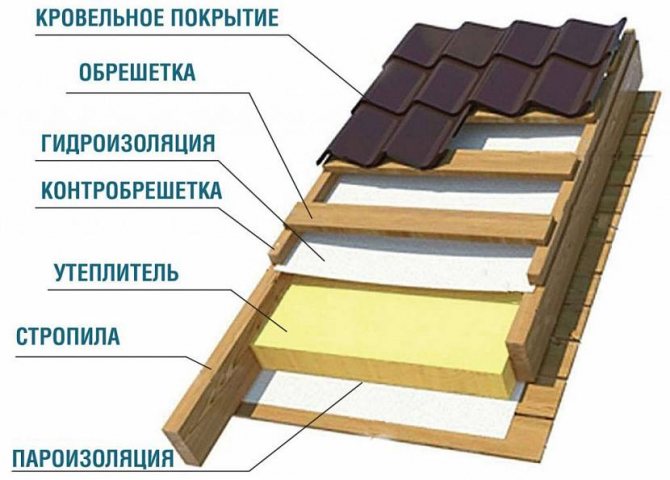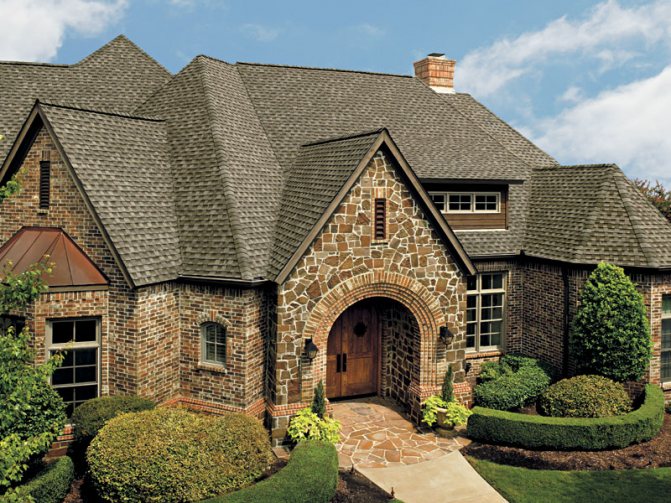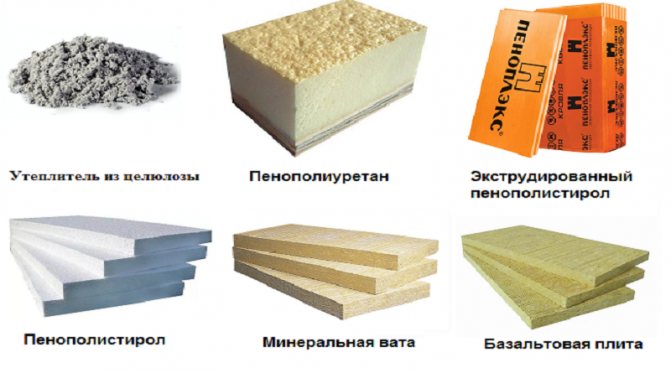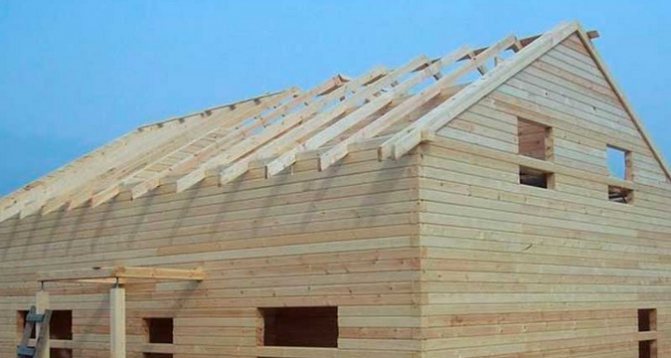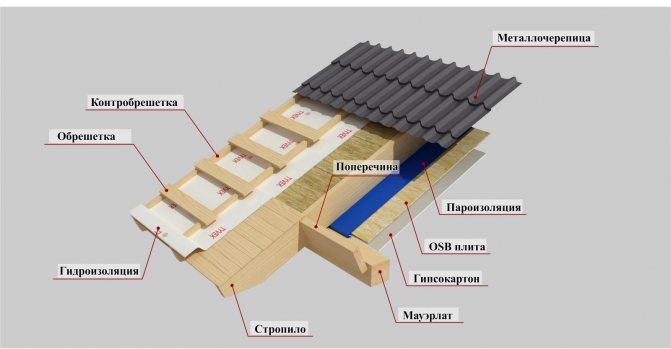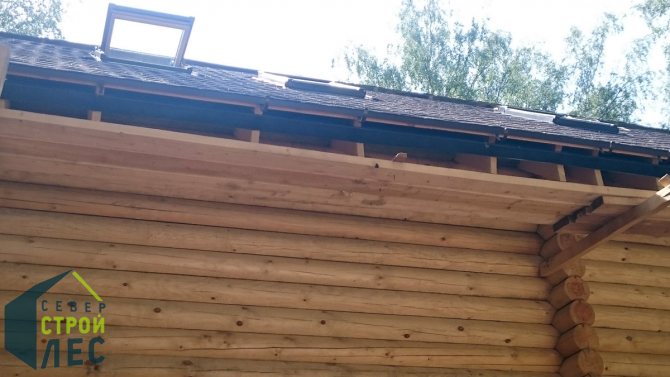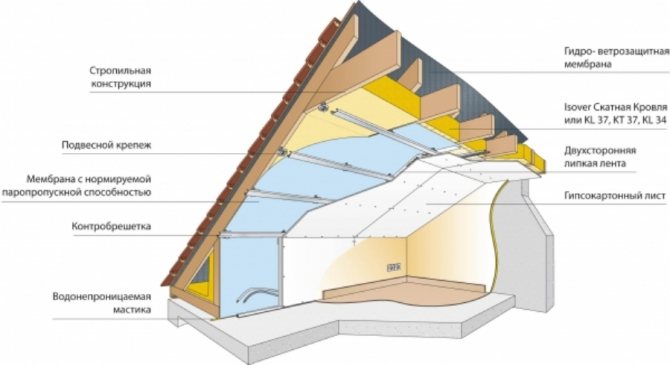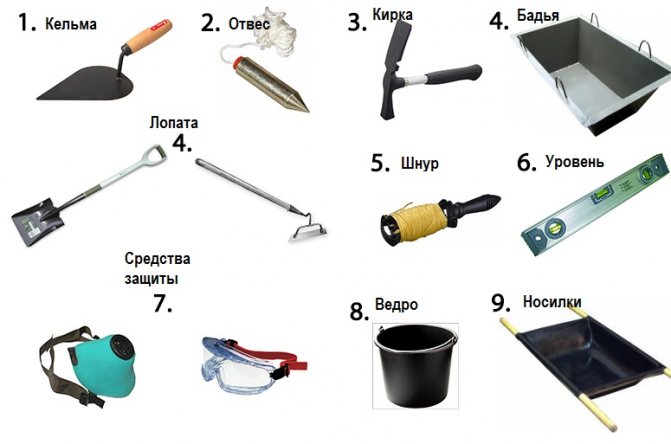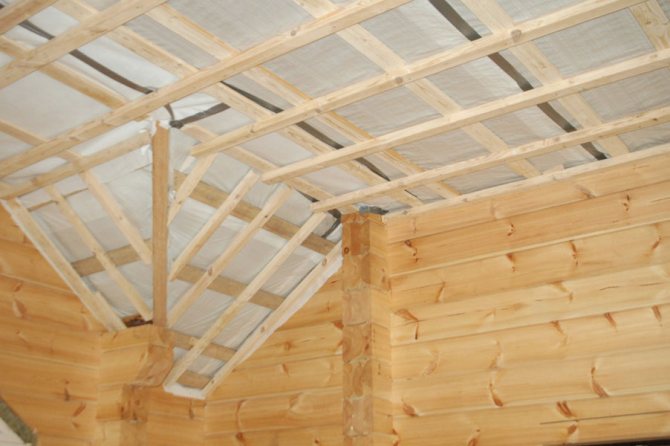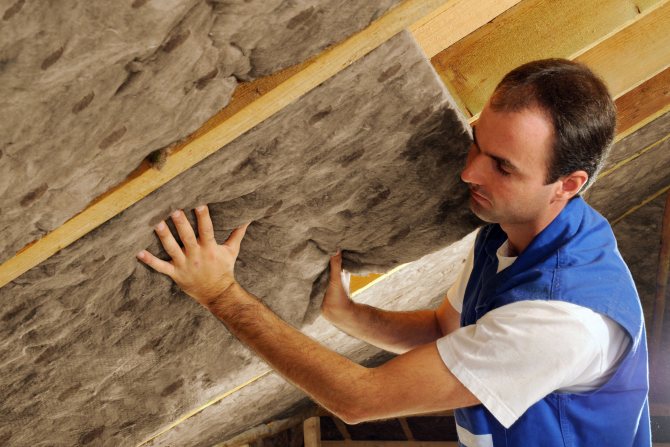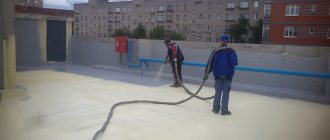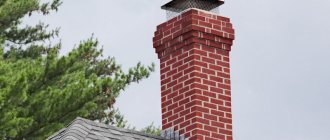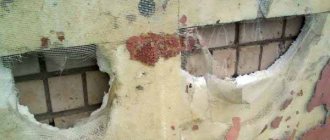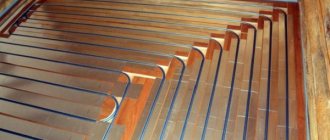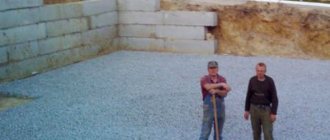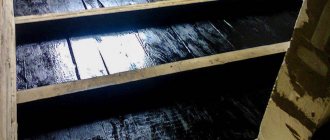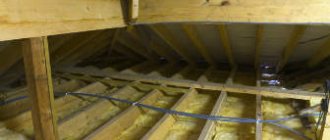What can I do to keep the roof from heating up?
Especially residents of panel houses, in which there is a flat roof and no attic, face such a problem. Thus, there is practically no air space between the attic and the apartment, which serves as a kind of pillow and prevents strong heating of the room. It all depends on what room you live in.
What to do to keep the roof cool:
- If this is a private house, then the most reliable option is to completely dismantle the roof with the installation of thermal insulation.
- For these purposes, usually immediately under the roofing material, after vapor barrier, mineral or glass wool is installed. Thanks to its presence, it is possible to restrain the penetration of heat inside.
- Although the roof will heat up, the mineral wool layer prevents heat from entering. This is due to the fact that there is an air space between the fibers of the glass fiber, which is the restraining element of heating.

Corrugated roof
Recommendations for insulating a house with slag
In order to insulate the floor and ceiling with slag to ensure a comfortable stay in the room at any time of the year, it is recommended to adhere to the following recommendations during the work:
- the height of the insulating layer depends on the load that will be applied to the floor and ceiling;
- before applying the screed, in order to increase the mechanical strength, the floor can be equipped with a reinforcement;
- the floor and ceiling from the attic side can only be used after the concrete layer has completely hardened.
Thus, insulation of the floor and ceiling with slag in a country house or city apartment is much easier than it might seem at first glance. To do this, it is enough to follow the instructions and perform all stages of work with high quality.
The ondulin roof heats up, what should I do?
The easiest option is to install foam. This method is often resorted to by residents of apartment buildings with a flat roof and no attic.
The ondulin roof heats up, what to do:
- This is the easiest option to avoid overheating.
- Polyfoam is glued to the ceiling from the inside of the house, after which all the decorative work is carried out, to sew the ceiling with plasterboard. The method is ideal even for houses with low ceilings, in apartments such as "Brezhnevka".
- With a ceiling height of 2.5 m, it is quite difficult to part with even 10 centimeters. Therefore, choose the simplest option.
In no case should Styrofoam be used as insulation for a tile roof in a private house.
The fact is that the roof heats up very much, in turn, giving off heat to the foam. When heated, the foam can release a large amount of toxic substances into the air. Therefore, the house may start to hurt.


Ondulin roof
Flat roof construction ↑
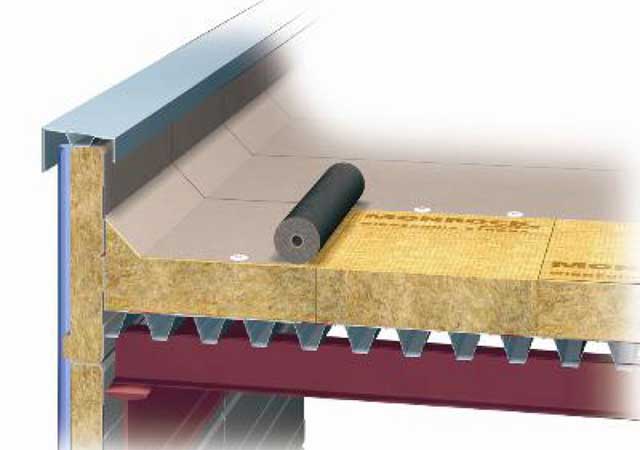

A flat roof, like any other, must fully fulfill all its functions: protection from water and its drainage and thermal insulation. In addition, it must be strong enough to withstand external loads.
This is what determines the structure of the roofing cake, which consists of the following mandatory elements.
- Base. All the main loads fall on this part. The overlap should be very strong, but it all depends on whether the roof is being used or not.Most often, the base is a reinforced concrete slab laid on load-bearing walls, less often on non-residential buildings - a layer of profiled sheet.
- Vapor barrier layer. Performs a protective function, which consists in preserving materials from steam penetrating from inside the room.
- Thermal insulation. Reduces heat consumption from the house.
- Waterproofing. A flat roof does not completely drain all the water, like gable counterparts, as a result, high-quality protection against moisture penetration is needed.
A ramp is used for normal moisture removal. Most often, it is a screed that forms slope angles along which water can flow into the prepared system of trays to remove it from the roof plane.
Saving on any details of a flat roof is unacceptable, otherwise it will lead to leaks, freezing and other negative phenomena of a poorly mounted roof pie.
The roof is very hot, than sheathe it inside?
In a private house, a "filling" of expanded clay or bituminous wool is often used. There are other options, such as expanded polystyrene, polyurethane foam.
The roof heats up strongly than sheathes inside:
- The main advantage is the absence of seams, but you will have to spend a decent amount of money, since the spraying is carried out with special equipment trained by the team.
- Such insulation can cost a pretty penny, but at the moment it is considered one of the best.
- The simplest and cheapest option is to use mineral wool for a private house.
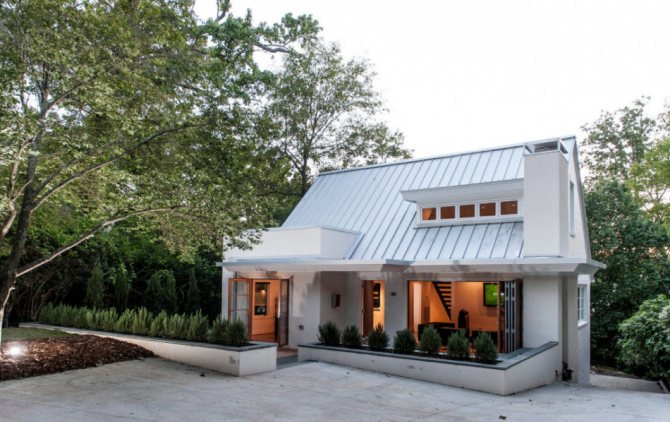

Silver roof
Heaters
107 votes
+
Voice for!
—
Against!
The construction of wooden houses is gaining popularity again, because many people like their unique air with a special scent of wood. If, for some reason, the building was not insulated during construction, this must be corrected. In order to keep warmth in a house made of wood, it is necessary to make thermal insulation of all surfaces: floor, walls, ceiling and roof. In this article, we will talk about how a wooden roof is insulated with our own hands using the most common methods.
The need to insulate a wooden roof
Wood itself is an excellent insulating material. And when operating a residential building, you should use these properties and try not to disturb the natural convection of air in the rooms. Thanks to the thermal insulation of the roof made of wood, the beams of the house floor will be protected from decay and will not deteriorate prematurely.
If you incorrectly insulate a wooden roof and disrupt the movement of air flows, then dampness will arise, a fungus will appear on the rafters, floor beams and the ceiling and other unpleasant consequences. To prevent this from happening, it is necessary to carefully consider the choice of heat-insulating material, taking into account the fact that the roofs of wooden and brick houses are very different from each other. Therefore, the materials used to insulate brick buildings are not suitable for wooden houses.
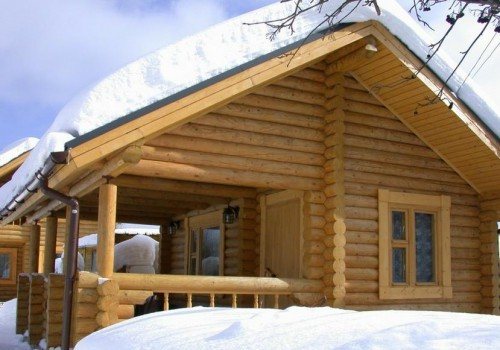

Special heat-insulating materials should be used for insulating wooden roofs, which are distinguished by a long period of operation, resistance to moisture and various loads, the ability to prevent the formation of cracks and deformation, and the absence of the risk of shrinkage, as this leads to the appearance of cold bridges.
For many years in a row, straw was considered the best insulation for wooden roofs. Today there is a wider selection of materials for thermal insulation of wooden house roofs. Since wooden houses can easily ignite, it is customary to use materials that do not ignite, say, fiberglass and mineral wool.
Features of the insulation of a wooden roof
If the house was recently built, insulation cannot be carried out until the wooden structure shrinks.After construction, at least a year must pass. In this case, you must completely complete the finishing of the roof. It is possible to undertake thermal insulation work only after eliminating all defects that appeared as a result of subsidence of the house.
If the residential building is many years old, you need to approach the insulation of the roof of a wooden house more thoroughly. If the roof has been leaking and has been exposed to temperature fluctuations and moisture for a long time, it may require major repairs or a new overlap. Take a close look at any places you doubt the integrity of, and check the wood for decay.


But if the attic will be used as an attic or as a storage room, or if winters are too harsh in your region, then it is not enough just to insulate a wooden roof, you need to simultaneously insulate both the roof and the floors between the attic and the living quarters. Be sure to insulate both the ceiling inside the house and the floor of the attic.
When equipping a mansard-type wooden roof, it is advisable to combine thermal insulation with a special reflective film, which is made on an aluminum base. The reflective side is attached from the outside. The main purpose of the film lies in the reflection of ultraviolet rays in the summer months during the activity of the sun, which should reduce the heating of the air in the attic.
Do-it-yourself wooden roof insulation
It is not necessary to be a qualified builder to carry out work related to roof insulation. It is enough to watch a video about insulating a wooden roof and understand that you cannot save on heat-insulating materials.
Roof insulation with mineral wool
Thermal insulation of a wooden roof with mineral wool is highly efficient and durable. The low weight of the mineral wool determines the minimum mechanical stress on the roofing structure. Mineral wool is suitable for long-term use and in summer it withstands high temperatures well, unlike foam.
If you plan to insulate the roof with mineral wool, then it is advisable to use mineral wool mats, and not roll material, since they do not settle over time and hold their shape better. But even when buying material in mats, it can be easily adjusted to the dimensions of the gaps between the rafters. The material can be cut and cut.
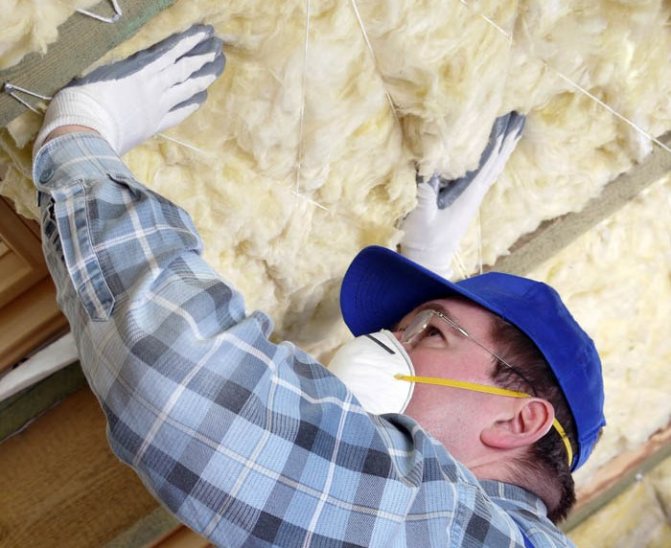

When carrying out work, you must strictly follow the following scheme for insulating a wooden roof with mineral wool:
- The first layer is waterproofing. If you are looking for the most economical option, then you should use a conventional waterproofing film that does its job well. But if the effect is important to you, it is better to buy a superdiffuse membrane. The insulation can be attached to it close to it, without making an additional crate for ventilation. Its vapor permeability is much higher than that of conventional waterproofing.
- Insulation. The thermal insulation material must be laid in 2 layers in the cavities that are formed by the roof rafters. It is customary to lay it in a dense layer of 10-25 millimeters. Its thickness will depend on the climate in your area. The insulation should be laid so that there is a ventilation gap between it and the upper edge of the rafters, which serves to remove the warm moist air that enters from below. But at the same time, you need to ensure that the thermal insulation material does not crawl out of the rafter system. Do not cover cables and wires with mineral wool slabs.
- Vapor barrier. On top of the insulating material, a vapor barrier material is attached to the rafters, which is required to trap the moisture-saturated air that rises up. To exclude the penetration of moisture, it is customary to glue all the seams of the film with special construction tape.Therefore, the insulation will be in the so-called moisture-proof "bag", but the ventilation gaps will ensure the normal ingress of air. The roof covering can then be laid.
Thermal insulation of the roof with expanded clay
Expanded clay is called the most environmentally friendly material of all that is used for roof insulation. Therefore, it is ideal for insulating a wooden roof. Such insulation is considered durable, it does not shrink and is not spoiled by rodents. If you place the material correctly, the likelihood of cold bridges formation is minimized.
In addition, the cost of insulating a wooden roof with expanded clay is acceptable: there is no need to invest large sums, you just need to purchase roofing material in rolls and a sufficient amount of expanded clay.


And it is worth acting according to this technology:
- To begin with, close all the slots so that the material does not spill out. In this case, a special film will not work - it may not withstand the load. Therefore, it is customary to lay roofing material on the floor. In this case, an overlap should be made on the surface of the walls.
- Fill with material. Do this carefully, because the properties of expanded clay deteriorate with intensive filling: many particles can break, losing their thermal insulation capacity.
- From above, you can also cover the insulation with roofing felt, which will simultaneously act as a waterproofing material.
Roof insulation with expanded polystyrene
Expanded polystyrene is not the best insulation for a residential building made of wood, but if this particular material was chosen, then you should pay attention to its flammability group. The most optimal option out of the existing four groups is G1. Expanded polystyrene with this marking burns only when it comes into contact with a fire source.
Expanded polystyrene has a number of advantages: lightness, the ability to cut it without special equipment, the ability to keep warm well even at high humidity, resistance to fungal attack and harmful insects.
It is necessary to insulate a wooden roof with expanded polystyrene according to the same scheme as when using mineral wool. The only thing: at the joints of the slabs, it is imperative to fill in the gaps, as shown in the photo of the insulation of a wooden roof. It is most convenient to do this with the help of polyurethane foam, because it is able to be evenly distributed over the entire hole without gaps. In addition, this procedure does not take much time.
Final works on thermal insulation
If you have completely insulated a wooden house and its roof, then the ceiling must be insulated due to the peculiarities of wood as a material. Warm air in a wooden house, rising to the ceiling, will carry with it particles of moisture, which settle on the ceilings and the ceiling and provoke the process of wood decay and the formation of mold. Thus, it is necessary to install a heater with waterproofing elements on the ceiling. The scheme of thermal insulation of the ceiling in a wooden house with a pitched or flat roof and an attic looks like this:
- Air cushion - the free space between the thermal insulation material and the ceiling slab to prevent condensation from forming.
- Thermal insulation using fireproof insulation material.
- Vapor barrier is a membrane or film that prevents the penetration of capillary moisture to the ceilings.
- Interior decoration.
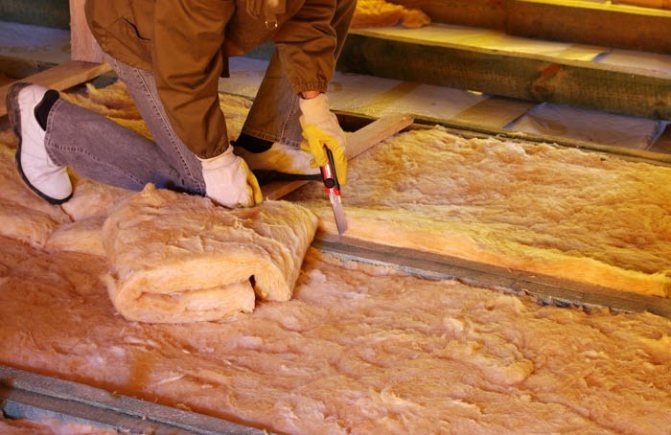

After that, you can begin to warm the floor in the attic, which is done as follows:
- Eliminate gaps between beams and beams. You can caulk them with tow, jute or felt, or fill them with polyurethane foam.
- Lay a layer of vapor barrier on the floor of the attic, place a layer of insulation on top of it - without gaps. You can use polystyrene or mineral wool as insulation.
- Sprinkle the floor surface with a shawl or expanded clay, followed by a screed.If you plan to use the attic, you can arrange a wooden floor.
In addition, to insulate a wooden roof, you can use foam insulation or liquid polyurethane foam, which is an inexpensive and effective material. It is customary to apply it by spraying directly onto the insulated surface. The whole procedure takes a minimum of time. The price of insulating a wooden roof with penoizol is low. In this case, there is no need to additionally prepare or dismantle the base. The work is completed as soon as the desired layer thickness is reached.
What can I do to keep the roof from heating up?
What if this is the roof of a garage, or a house in the country? Usually, if there are some small rooms, or trailers, then the roof is made of ordinary profiled sheet. It is metallic, heats up strongly in the sun, therefore it gives off heat to the inside of the room.
What to do to keep the roof cool:
- You can also install insulation under the profiled sheet. The ideal option is to install the battens made of boards, and to install it inside the spaces with mineral wool. Next, sheathing is done using drywall.
- Do not forget about hydro and vapor barrier. However, this option also steals space and height of the room. In a house in the country, in which the roof is made of profiled sheet, it is not recommended to use foam. It heats up under the influence of the sun and can release toxic substances.
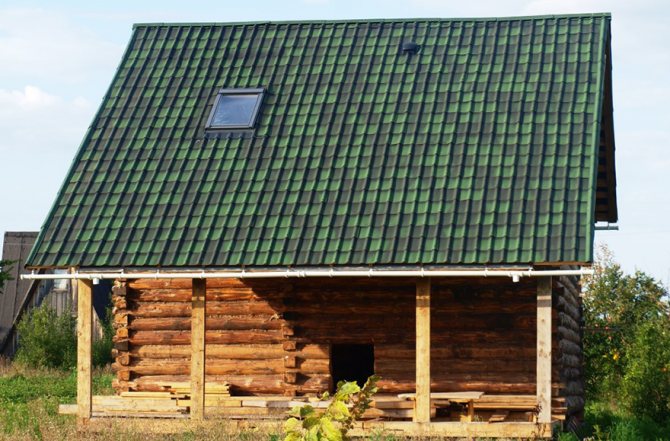

Beautiful roof
ІІ Option. Using roll materials
Features of working with these materials
When the question arises of how to properly insulate the ceiling in a wooden house in other ways, then rolled insulation is immediately remembered. These include glass wool, mineral construction wool and other lightweight technological insulation.
Significant disadvantages of these materials are irritation on the human skin from contact with them. And if a person has a tendency to allergies, this can become a significant factor in its manifestation. In addition to irritating the skin, these tiny particles get into the eyes and mouth. When performing such work with these materials, you need to protect yourself with very tight clothing, a respirator and goggles.
The technology of laying roll insulation
- An anti-condensation foil must be fixed to the ceiling. As it can be used glassine. For greater safety net, you can additionally use plastic wrap. If you do not perform this operation, then glass wool or mineral wool from condensation can become significantly wet, which will negatively affect the thermal insulation. In addition, moisture can be a source of fungal rot in wood ceilings.
- Nails are stuffed into the ceiling so that the head of the nail is not hammered to the surface of the ceiling.
- Using these nails, the threads are pulled in a zigzag manner. The hats help these threads not to come off. The purpose of the thread is to hold the unfolded roll material in a fixed position.
- The insulation is laid out in this way: the thread is lifted, the insulation is placed in the space between the ceiling and the thread. The work needs to be done by two: one person spreads the material, and the second pulls off the thread. It is not recommended for one person to do such work.
- The nails are driven in deeper, for a clear fixation of the insulation layer.
Protecting the roof from the sun
But you can use a simpler option. This is a roof covering with foil, or special paint. Aluminum foil reflects approximately 97% of the sun's rays. Thus, it does not heat up.
Sun protection for the roof:
- The sun's rays are reflected and the room stays cool. But this method has one big drawback - such a roof gets dirty very quickly under the influence of precipitation and dust, and the reflectivity decreases.
- Thus, the amount of sun that is reflected becomes much less and the roof starts to heat up again.There are now special paints that contain reflective components.
- They can also be used to cover the roof. It is enough just to paint the corrugated board with such paint. But approximately every year, the coating will have to be renewed in order to restore the reflectivity.
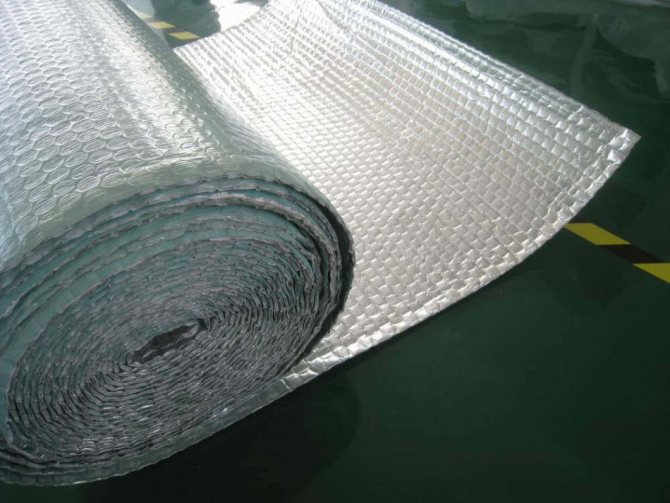

Heat repair roof
The roof of the profiled sheet heats up, what to do?
If the roof in the garage is very hot, then all of the above methods are not very suitable, due to their high cost and the need for free space. Therefore, the best option for a garage is to install additional ventilated space.
The roof of the profiled sheet heats up, what to do:
- To do this, pieces are cut from a metal corner, so that the height above the garage is about 15-20 cm.
- On top of these corners, galvanized sheets are mounted, they can be painted with silver paint.
- It is also necessary that the air leaves this ventilated space unhindered. This is necessary so that hot air leaves there and does not heat up the garage roof, which borders on its interior.
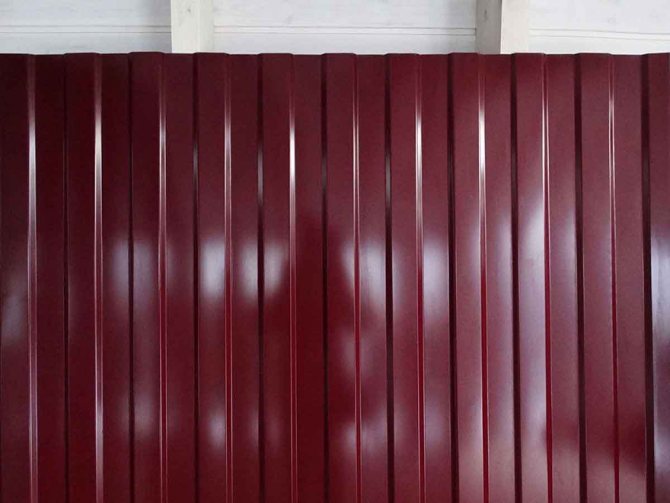

Corrugated board
The main criteria for the selection of roofing material
In order to determine the best way to cover the roof of the house, it is necessary to take into account several factors that affect the choice of material.
- The cost of roofing material and the complexity of its installation are directly related to the volume of upcoming costs, therefore, the roofing material must be selected based on financial capabilities.
- The architectural solution in the design of a building also imposes some restrictions on the choice of roofing material. The angle of the slope and the geometric complexity of the roof can serve as a significant obstacle to the use of the roofing material you like. In addition, for some roofing materials, it is necessary to use more durable rafter systems and solid sheathing.
- The color scheme of the selected material should be in harmony with the building project. Some roofing materials do not have the required range of colors, which can also serve as a limitation when choosing.
- A very important factor when choosing a roofing material is its durability, maintainability and reliability, since usually the roof is created once and for many years. It must maintain its physical characteristics and aesthetics for the entire period of operation.
- The weather conditions typical for the region where the building is being erected also seriously affect the choice of roofing material.
The better to cover the roof of the house
Answering the question, the better to cover the roof of the house, consider the most popular roofing materials.


Slate. Traditional slate is a profiled sheets of asbestos cement. More recently, this type of roofing materials had an unpresentable gray color. But recently, manufacturers have begun to add special pigments to the slate structure, thereby significantly expanding the color gamut.
- Asbestos-cement slate is a unique material in terms of price-quality ratio.
- It is easy to install and does not require continuous lathing.
- In addition, the service life of this material is 40-50 years.
A major disadvantage of this type of roofing is its rather large weight, which requires the creation of reinforced roof systems.
The question of what is better to close the roof in irresponsible or outbuildings is quite easy to answer - slate is almost ideal in this case.
Metal tiles.
The metal tile is a profiled steel sheet, about 0.5 mm thick, protected from corrosion by several layers of metal and polymers.The metal tile has a wide range of colors and is used to create an aesthetically pleasing roof with complex configurations. It should be noted that the limitation for the installation of metal tiles is the roof with an angle of inclination of less than 12 degrees, and with an inclination of more than 40 degrees, the consumption of material increases significantly.
The average service life of a metal tile, with proper installation without damaging the protective layer, is 50 years. This roofing material is somewhat more expensive than asbestos-cement slate, but the ease of installation and high aesthetics of the material more than compensate for the difference in cost.


Metal roofing
Ceramic tiles and natural slate
Ceramic tiles and natural slate are natural materials, so their service life without loss of consumer properties is many decades. With the help of these materials, you can create designs that are unique in beauty, but the cost of tiles and natural slate is quite high, in addition, the features of the materials make installation quite difficult... The large weight of this type of coating requires the creation of powerful rafter systems and continuous sheathing.
The roof of the garage is heating up, what should I do?
A simpler and more economical way is to use special awnings.
The garage roof heats up, what to do:
- To do this, you need to purchase silver awnings, which are often used by advertisers. It is necessary to install a special crate under it and pull it on top of the garage roof, retreating a distance of about 15 cm.
- The result is additional ventilated space. The silvery fabric repels the sun's rays, preventing the metal roof from heating up. This method is the most economical, as it allows you to purchase used tents, which are quite inexpensive.
- Additional elements for the construction are also cheap. They can be made from wooden slats or metal corners. The lathing can be done with metal or wooden boards.
- The option is not the most attractive, but it does not steal space, and allows you to significantly cool the room, prevent it from heating. Usually, air conditioners are not installed in garages and suburban trailers, due to the lack of electricity or economic disadvantage.
- In addition, such devices can be stolen, because hardly any of the owners of the dacha lives there year-round.
Corrugated board
Installing glass wool is not the best option if the attic is a living space. If you are worried about the health of your children and do not want to use mineral wool, there are other options.
Sawdust stacking technology
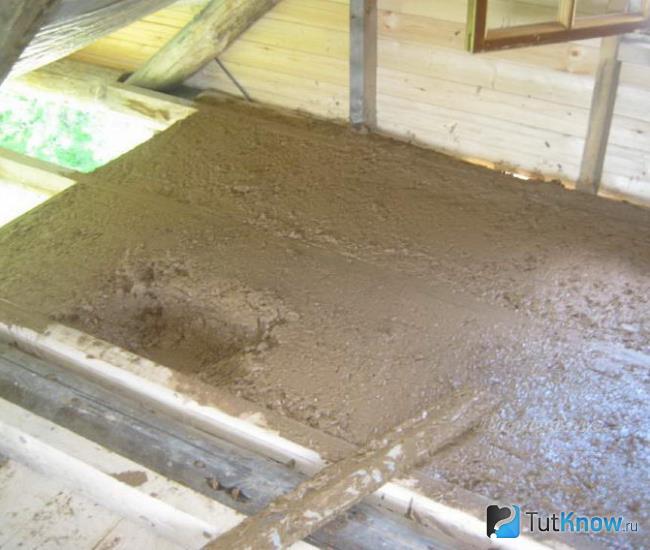

Before insulating the roof with sawdust, you should prepare the components of any of the insulating mixtures described above, a bucket, water, a large mixing container, a hoe or a shovel.
The work must be done in this order:
- Install the timber plank formwork on the subfloor of the attic floor. Boards can be taken substandard or even do with a croaker.
- Knead a sawdust-based thermal insulation compound in a container, and then pour it onto the sub-floor covered with a waterproofing material, creating a layer 8-25 cm thick, depending on the components used and the load-bearing capacity of the floor.
- Align the surface of the insulation using the rule and leave it to dry completely.
- After 2-3 weeks, lay another layer of waterproofing on top of the hardened coating and fix the edges of the material on the wooden floor logs.
- Attach a plank flooring, thick plywood or chipboard to the logs with self-tapping screws. They will be the basis for finishing the attic floor.
When insulating the roof slopes, you first need to create cavities for filling the insulation. A dry mixture of sawdust and lime must be placed between the waterproofing protection and the inner lining of the roof using the technology of insulating frame-panel walls.The backfill layer thickness should be 20-30 cm.
How to insulate the roof with sawdust - watch the video:
[media = https: //www.youtube.com/watch? v = 9MkFisA6YkU]
Thermal insulation of the roof with sawdust gives good results and is quite within the power of even an inexperienced owner in the construction business. If the insulating composition was correctly made and the technology of its installation was followed, you can enjoy the comfort in a house with a warm attic for more than a dozen years.

